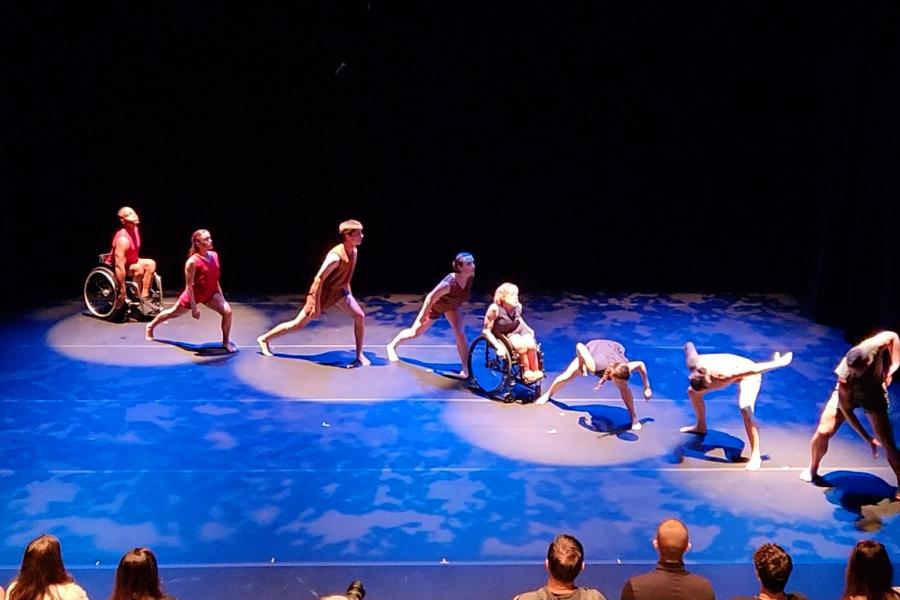College of Arts and Sciences

Despite the Dangers, Early Humans Risked Life-Threatening Flintknapping Injuries
For most, the craft known as flintknapping is a skilled hobby or art form that was thought to occasionally require bandages or stitches. However, new research suggests flintknapping is far more dangerous than previously understood.

Top Honors: Kent State Recognized Among the Best Graduate Schools in 2023-2024 US News Rankings
U.S. News & World Report ranks 11 Kent State University programs among the best in the nation in its recently released 2023-2024 Best Graduate Schools rankings.

Kent State English and Dance Double Major Graduates Today; Shares Her Incredible Experience with Dancing Wheels
Angelina DiFranco started dancing when she was just three years old and wearing a diaper under her leotard. “I was terrified of my dance teacher,” DiFranco joked. "No, she's great." She got her start at Starship Dance Studio in Guilford, Connecticut, about 90 miles from Lincoln Center in New Y…A Nonstop Beat
Sonyea Moore, a sophomore Honors student from Twinsburg, Ohio, is currently pursuing two majors and three minors in the College of Arts and Sciences and is thriving while doing so. Holding a 3.9 G.P.A., Sonyea is following her interests in the humanities through majors in anthropology and Africana studies, along with her minors in English, creative writing, and history. While the workload of such an education is demanding, Sonyea explains it's worth it to study her passions.

Kent State Geography Researcher Examines Tree Growth by Looking at Air Masses
What are the main factors that either inhibit or promote growth in trees? Traditionally, scientists primarily looked at temperature and precipitation. However, Cameron C. Lee, Ph.D., assistant professor of Geography at Kent State University, and the members of his ClimRISE Lab take a different …
Biological Sciences Researchers Exploring the Role of Brain Hormones in Development
What determines your social behavior as you develop into an adult? While this is a complex question to answer, understanding how the brain develops can provide critical insights. For two decades, Heather Caldwell, Ph.D., professor in the Department of Biological Sciences at Kent State University,…
Kent State Experts Weigh in on Aftermath of East Palestine Train Derailment
Kent State University faculty members have been contacted by various media outlets to lend their expert opinions and insight as cleanup work, air monitoring, water testing and more continues following the Feb. 3 train derailment in East Palestine, Ohio.

Connecting Students to the Past
Western Reserve Historical Society and Kent State have announced a cooperation agreement enabling unique access and real-world experiences for students and faculty in the Department of History. Kent State students will gain access to archival research materials for research projects, internships and jobs as well as research assistantships for graduate level students.

Kent State Researcher Reviews East Palestine Cleanup
On Feb. 3 in East Palestine, Ohio, dozens of Norfolk Southern rail cars derailed, 11 of which contained hazardous materials. In an effort to start repairing the situation, Arcadis, an international company hired by the railroad company, has developed a plan to clean the air, ground and water in the village. Kuldeep Singh, Ph.D., assistant professor in Kent State’s Department of Earth Sciences, reviews the cleanup plan.

The Quarter-Life Crisis: Kent State Professor Discusses ‘Emerging Adulthood’
Kent State University Professor Angela Neal-Barnett, Ph.D., from the Department of Psychological Sciences shares her expertise in a Deseret Magazine article about the quarter-life crisis. She discusses the stage of development called “emerging adulthood.”